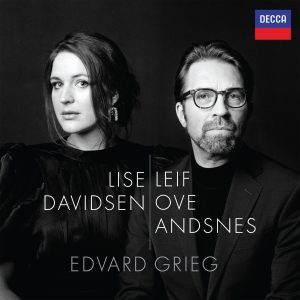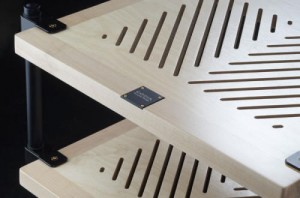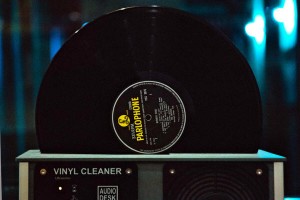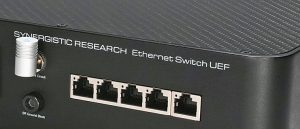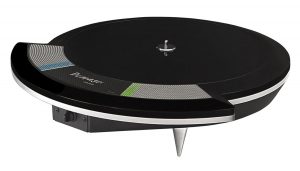I came to the Nordost QPOINT Synchronizers in a roundabout manner. My primary interest was their QSOURCE Linear Power Supply. After auditioning a couple of low-price linear power supplies for my ethernet streaming front-end and coming away unsatisfied, I turned my gaze higher and spied the QSOURCE LPS. It exceeded my expectations and the review panned out with the demo unit being acquired. And then, almost as an afterthought, I inquired, "What about sending over the QPOINTs," because the two products were designed to work together.
QPOINT Design
The QPOINT operates one step removed from direct signal manipulation. It is designed to coordinate movement of the parts on the circuit boards inside the chassis. When electricity passes through a solid-state device—like a capacitor, resistor, transistor, etc.—it causes micro vibrations, or resonances. Unless something was done to align them, very likely they will be resonating at different frequencies. That's probably not good.
High-End companies attempt to tame the uncontrolled resonances in different ways. Marigo Audio Labs sells dots to stick on the circuit board parts which dissipate the energy; Synergistic Research offers platforms and Nordost has large discs that go under the component to tune the resonances, so they sing at the same frequency and sync-up.
What happens when the circuit board components sing in unison? Nordost claims the QPOINT is able to embellish particular desirable characteristics, including "a lower noise floor, enhanced coherency, greater dynamic range, more fluid musical expression, and greater space and ambiance in musical reproduction." Wow—that's some list!
And that's about right. The QPOINT can do those things, except not all at the same time. There are three choices that determine which effects are active and how strong they are: gear selection, placement of the QPOINT, and Mode selection.
Gear Selection
The QPOINTs are "board centric," they work on circuit board parts. To get maximum impact, make a list of your components in descending order of PC board density. I own CH Precision components. For this brand, the order is pre-amplifier, phono stage, DAC, master clock, CD transport, from greatest to least. Amps are not on the list, since they contain mostly power transformers, big filter caps, etc.. Next comes the Mode selection.
Modes and their Effects
The QPOINT has been designed with two modes in order to complement the various types of electronics found in the industry… Mode I and II each generate unique resonances, which emphasize different musical characteristics as they lower the noise floor. To alternate between Modes I and II, flip the switch located next to the power cord input… When the device is in Mode I, a blue LED light will be illuminated. When in Mode II, the light will switch to green.
Most of the posted reviews expressed a preference for the Mode I setting. This brought obvious benefits: increased dynamic range; hard-hitting, exciting transients; and a dimensional soundstage with discrete images. If that is what you are looking for, set the QPOINT to the blue LED. I am the iconoclast preferring Mode II, because the items above are not my priority right now. (The exception is the 3-D soundstage, which sounds mighty attractive.) I'm more interested in "fluid musical expression, and greater space and ambiance." To get those, I'm a green LED, Mode II guy.
In either Mode setting, the QPOINT locks down the map of the stage and increases the grip, adding body mass and boosting low frequency response. The sound is more pure and becomes easier to read, as if the signal has been cleaned up and extraneous stuff removed.
One genre that has forever been a challenge for my rig is opera singers. In a system that allows dynamics full expression, i.e., one that isn't overly damped or controlled, powerful sopranos are a real treble response stress test. In the worst case, they can push playback out of its comfort zone and result in vocal quality degrading into fingernails on a chalkboard. Case in point, the newly released EDVARD GRIEG songs, with soprano Lise Davidsen and pianist Leif Ove Andsnes (Decca CD). Ms. Davidsen generated shock waves when she recently made her debut at the Metropolitan Opera House. She possesses a staggering dynamic range that makes her a natural Wagnerian soprano. And one thing the critics all agree on, whether she's whispering intimately or declaiming from the rooftops, is her remarkably consistent vocal quality.
Does she sound that way in playback? It's entirely probable the answer is yes. A single QPOINT in either Mode placed on the preamp or DAC controlled her voice and kept it from breaking up. You will have full-range dynamics and fewer issues with her fortissimos, while allowing more consistent vocal quality. The QPOINT solidifies the images and clarifies the musical content.
This will be a godsend in most audiophile systems. As for me, ultimately I preferred to grant her voice a little more air and flexibility, and so my default is without the discs—unless the break-up problem resurfaces. (My system is always in flux as the gear shuffles.)
Positioning
Positioning is important. The QPOINT is 5" in diameter, which means it will cover only a small portion of the component's chassis. I started by placing one off to the right side the CH Precision L1 Preamp, but didn't really notice much change. Then I downloaded the User Manual. The layout schematic indicated the main preamplification boards were centered and towards the rear; the power supply regulation board was centered and in front. Hmm… that could mean one QPOINT might not be enough.
After moving the QPOINT center-rear, I heard it unmistakably. Then I added a second disc to the center-front and cycled through various Mode combinations. There were many attractive qualities with the front one in Mode I, the rear in Mode II, but ultimately it was too damped for me. Where'd all the resonances go? I removed the front QPOINT and repositioned it on the DAC, after consulting its schematic. The effects were clearly compounding in a good way. So that's where I left them, one on each component, set to Mode II. Sometimes, depending the CD, I go hybrid by setting the DAC to Mode II and the preamp to Mode I. Just a flip of the switch instantly tunes the sound. I tried a third on the CD transport, but that didn't do much.
Cosmetics and Installation
The QPOINTs come in a large, attractive cardboard box. In addition to the QPOINT, you get a wall-wart and several AC adaptors. But wall-warts and I don't get along; I didn't bother with them because I had the QSOURCE linear power supply available to get the very best power delivery. The QSOURCE was in turn connected to a QKORE Ground Unit.
Note that the QSOURCE has six outputs, four of which are meant for use with QPOINTs. The remaining two have variable output voltages suitable to replace the wall-warts used by many music servers, NAS drives, etc..
I'm not sure where I got the wrong impression—probably by not carefully reading the specs—but I was surprised when I opened the box. The QPOINT is neither small nor thin. Their 5" diameter is about the size of a CD, height is 1.02", and weight is 0.9 lbs. The device is beautifully made of brushed anodized aluminum with black accents and matches the other accessories in the QRT line. The fit-n-finish is first rate. One side of the QPOINT is a black dispersion plate. Position the QPOINT under the component with the black dispersion plate facing up. Or you can place the QPOINT on top, with the black dispersion plate facing down. (All surfaces are polished smooth but, just to be sure, use the leather protective pad provided in the packaging.)
The power cord between the QSOURCE (or wall-wart) and the QPOINT is a specialized DC cable (sold separately). Here's a description from the manufacturer:
Nordost's DC cable uses 2 x 22 AWG, silver-plated, solid core OFC conductors, which have been arranged in a twisted pair construction. This geometry helps to eliminate noise within the cable. However, to further safeguard from RFI and EMI, the conductors are protected by a braided shield. Additionally, the QSOURCE DC Cable uses Nordost's Micro Mono-Filament technology in order to increase signal speeds by introducing an air-dielectric to the cable design.
The QSOURCE DC Cable outer covering is black, thin and flexible. Quality Lemo connectors are used at both ends. The DC cables will need around two weeks for burn-in.
Conclusion
Controlling vibrations is a big deal in high-end audio because nearly everything vibrates and instability is a villain in our world. This guidance extends even to those small parts—the capacitors, resistors, transistors, etc.—residing on the circuit boards inside the component. They're all resonating and very likely at different frequencies, unless something is done to align them.
Many companies have come up with solutions. The promotional claims for the Nordost QPOINT product include "a lower noise floor, enhanced coherency, greater dynamic range, more fluid musical expression, and greater space and ambiance in musical reproduction." After auditioning a single QPOINT on my preamp, I can vouch this is not hyperbole.
At first, the QPOINT didn't do anything. Then I interrogated the preamp's layout schematic to find where the PC boards were concentrated and adjusted the QPOINTs placement. In a flash, all of those benefits came into play. A nice feature is the two-position Mode switch on the device that lets you choose which effects are more pronounced. This allows instant tailoring of the sound.
I have no doubt the QPOINT will be a welcome addition to most audiophile systems.
QPOINT Synchronizer
Retail: $824.99
QSOURCE Linear Power Supply
Retail: $2749.99
QSOURCE DC Cable
Retail: $299.99/m
Nordost







